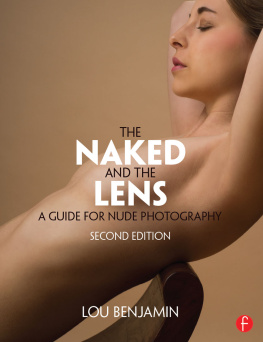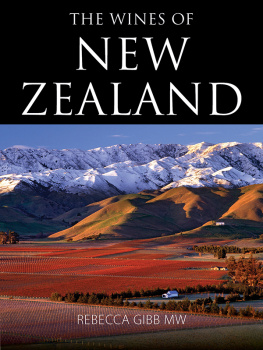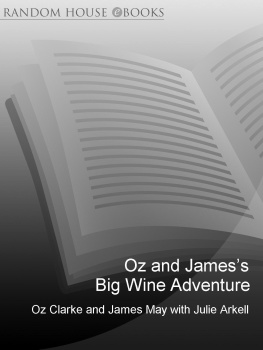Intelligent Guides to Wines & Top Vineyards |
Benjamin Lewin MW
Copyright 2015 Benjamin Lewin
Vendange Press
www.vendangepress.com
Without limiting the rights under copyright reserved above, no part of this publication may be reproduced, stored in or introduced into a retrieval system, or transmitted, in any form or by any means (electronic, mechanical, photocopying, recording or otherwise) without the prior written permission of both the copyright owner and the above publisher of the book. All enquiries should be directed to contact@vendangepress.com.
Based on my book, Wines of France, this eGuide is devoted specifically to the Loire. The first part discusses the region and its wines; the second part has individual profiles of the top producers. The basic idea is that the first part explains the character and range of the wines, and the second part shows how each winemaker interprets that character.
In the first part I address the nature of the wines made today and ask how this has changed, how its driven by tradition or competition, and how styles may evolve in the future. I show how the wines are related to the terroir and to the types of grape varieties that are grown, and I explain the classification system. For each region, I suggest reference wines that I believe typify the area; in some cases, where there is a split between, for example, modernists and traditionalists, there may be wines from each camp.
Theres no single definition for what constitutes a top producer. Leading producers range from those who are so prominent as to represent the common public face of an appellation to those who demonstrate an unexpected potential on a tiny scale. The producers profiled in the guide should represent the best of both tradition and innovation in wine in the region
In the profiles, I have tried to give a sense of each producers aims for his wines, of the personality and philosophy behind themto meet the person who makes the wine, as it were, as much as to review the wines themselves. For each producer I suggest reference wines that are a good starting point for understanding his style. Most of the producers welcome visits, although some require appointments: details are in the profiles. Each group of profiles starts with maps to show the locations of the vineyards to help plan itineraries.
The guide is based on many visits to France over recent years. I owe an enormous debt to the hundreds of producers who cooperated in this venture by engaging in discussion and opening innumerable bottles for tasting. This guide would not have been possible without them.
How to read the producer profiles |
The second part of this guide consists of profiles of individual wine producers. Each profile shows a sample label, a picture of the winery, and details of production, followed by a description of the producer and winemaker. A full list of the symbols used in the profiles appears at the start of the profile section. The producers rating (from one to three stars) is shown to the right of the name. This is an example:
Hospices de Beaune | *, **, or *** |


|  Hotel Dieu, Beaune, France address 03 80 24 44 02  Catherine Guillemot  catherine.guillemot@ch-beaune.fr  Corton principal AOP Beaune 1er, Nicolas Rolin red reference wine  Corton Charlemagne, Charlotte Dumay white reference wine  www.hospices-de-beaune.com 60 ha; 400,000 bottles
vineyards & production |
The Hospices de Beaune was founded in 1443 by Nicolas Rolin, chancellor of Burgundy, as a hospital for the poor. Standing in the heart of Beaune, the original buildings of the Hotel Dieu, now converted into a museum, surround a courtyard where an annual auction of wines was first held in 1859. The wines come from vineyards held as part of the endowment of the Hospices, and are sold in November to negociants who then take possession of the barrels and mature the wines in their own styles. (Today the auction is held in the modern covered marketplace opposite the Hotel Dieu.) There are 45 cuves (32 red and 13 white); most come from premier or grand crus from the Cte de Beaune or Cte de Nuits, but because holdings are small (depending on past donations of land to the Hospices) many cuves consist of blends from different crus (and are identified by brand names). The vines are cultivated, and the wine is made, by the Hospices. For some years the vineyards of the Hospices were not tended as carefully as they might have been, and the winemaking was less than perfect, but the appointment of a new rgisseur has led to improvements in the present century. The name of the Hospices is only a starting point, because each negociant stamps his own style on the barriques he buys.
A bottle of white, a bottle of red
Perhaps a bottle of ros instead
(Billy Joel)
Loire producers are thought of as traditionally making white wine, but now there is some red wine, says Franois Robin of the producers organization, Inter-Loire, but this is somewhat of an understatement as production today splits more equally between red, white, and ros. The emphasis is on cool climate varieties, as the Loire is at the northern limit for viticulture; in fact, it is only due to the ameliorating influence of the river that wine can be made at all in the region.
The longest river in France, the Loire rises in the Massif Central, and runs more or less north to Sancerre, where it turns west. No longer navigable, it meanders through the wine regions for about 400 km (250 miles) before it empties out into the Atlantic. The Loire is divided into four general regions for wine production: the Nantais near the coast, Anjou centered on Angers, Touraine centered on Tours, and the Centre around Sancerre. All styles of wine are found in the Loire as a whole, but going from west to east, the Nantais is dominated by dry white, the largest production in Anjou is ros, the bulk of Touraine is red, and the Centre (the general name of the eastern vineyards) focuses on dry whites. The sweet whites of Anjou and Touraine have a great reputation, although production volume is small.
Next page
















 Hotel Dieu, Beaune, France
Hotel Dieu, Beaune, France 03 80 24 44 02
03 80 24 44 02 Catherine Guillemot
Catherine Guillemot catherine.guillemot@ch-beaune.fr
catherine.guillemot@ch-beaune.fr Corton principal AOP
Corton principal AOP Beaune 1er, Nicolas Rolin
Beaune 1er, Nicolas Rolin Corton Charlemagne, Charlotte Dumay
Corton Charlemagne, Charlotte Dumay www.hospices-de-beaune.com
www.hospices-de-beaune.com


